Before the advent of the mobile handheld computer, watches were the primary (or in some cases the only) tools of timekeeping. Ok, also clocks but time became personal long before electricity lifted the world out of darkness. Consumers of the 21st century, by way of contrast, can access the hours, minutes and seconds on nearly all powered devices in their daily lives – while also having a perpetual calendar and chronograph in the mix. Fun fact: there is more computing processing power in your mobile phone than the Apollo 11 astronauts had in their spacecraft.
Obviously, we live in times where watches are bought less for their timekeeping performance and more as a lifestyle accessory or personality enhance. Well, that requires a qualifier so here goes: watches can make you feel better about your standing in life and in society. Still, the precision of timekeeping remains the single most objective aspect for which a timepiece can be judged, as design, shape, colour and size are all subjective. It is worth remembering here that collector Henry Graves Jr (he of the Henry Graves supercomplication from Patek Philippe) was primarily interested in watches with exceptional precision, which in the early 20th century meant observatory-certified watches.
The following standards show prominent third party certification bodies serve as a pillar of confidence – and how certain watch brands are doing more internally to guarantee precision.
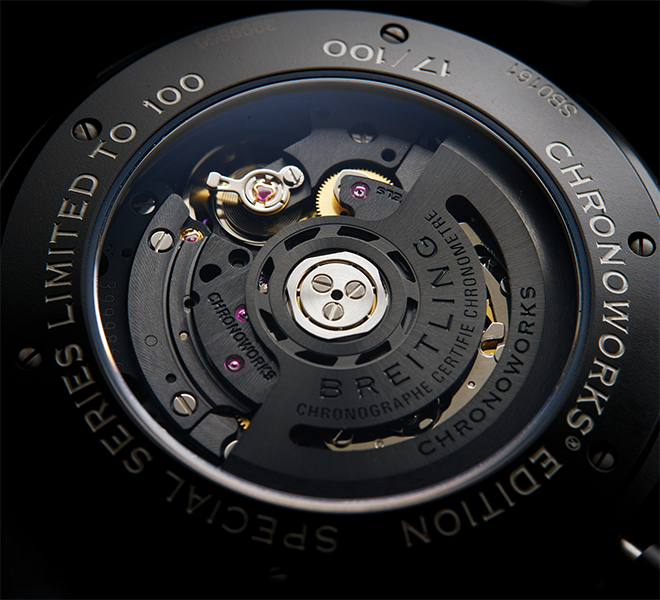
Typically found on watch dials, the COSC chronometer label sometimes appears in other places, as seen here. Breitling has put it on the rotor of the Superocean Heritage Chronoworks where it reads “Chronographe Certife Chronometre”
Watch Quality Benchmark 1: COSC CHRONOMETER
The Official Swiss Chronometer Testing Institute is also referred to as COSC – the shortened form of its French name Contrôle Officiel Suisse des Chronomètres. COSC serves as an independent institution providing testing and certification services to watch companies. A manufacturer who wishes to market a watch as a chronometer-grade timepiece must first submit the watch’s movement to COSC. At this facility, the movement is tested in five positions and at three temperature levels over a period of 15 days in order to identify the watch’s average daily accuracy. Only movements proven to be accurate within +6/-4 seconds per day are certified. Once returned to the manufacturer, these movements are cased up and the watches powered by them have earned the chronometer designation on the dial.
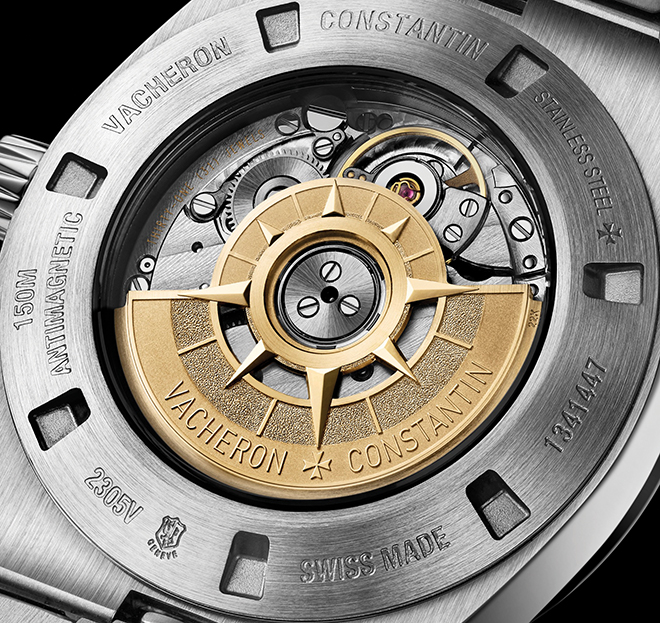
Geneva Seal or poincon de Geneve on a caseback of Vacheron Constantin watch
Watch Quality Benchmark 2: POINÇON DE GENÈVE
More casually referred to as the Geneva Seal, this standard scrutinises and certifies movements on three levels: provenance, craftsmanship and reliability. Provenance is a key emphasis here. Only movements assembled in Geneva can be certified; after all, the seal was established by the State of Geneva as a guarantee of Genevan watchmaking excellence.
According to the certification criteria, movements submitted to the testing body will be gauged for an accuracy level of +1/-1 minute per week. Functions such as chronograph, calendar and repeater are tested to ensure operational functionality. The power reserve must also be correct as per the specification claimed by the manufacturer. While the above qualities are intangible, the craftsmanship is not. All plates and bridges must be chamfered and polished by straight or circular graining such that all machining marks are removed. For this reason, a Geneva Seal watch is invariably well finished. Today, only a handful of brands can boast the seal in the form of an engraving on a movement bridge or the caseback.
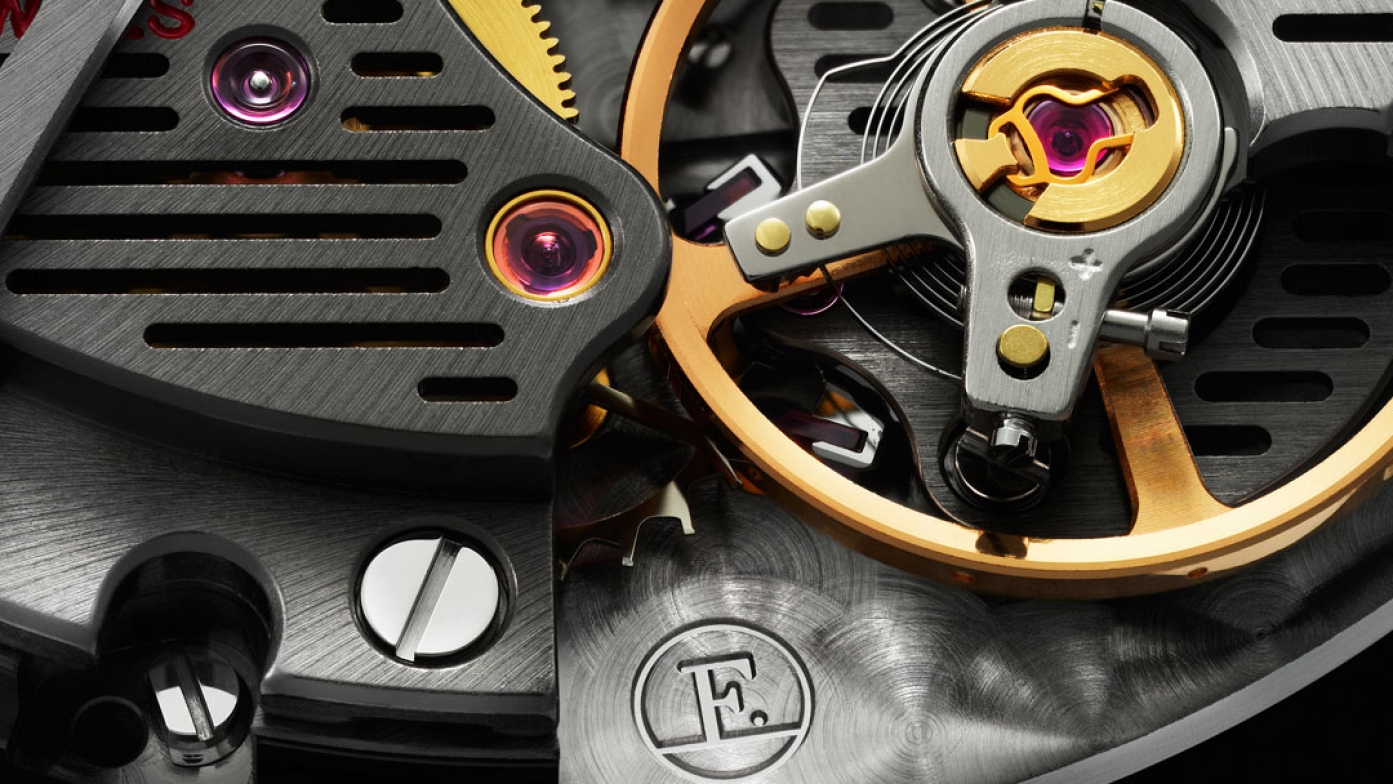
The Qualite Fleurier mark on a Chopard LUC
Watch Quality Benchmark 3: QUALITÉ FLEURIER
The Fleurier Quality standard was officially launched in 2004. It marks a joint project by Bovet Fleurier, Chopard, Parmigiani Fleurier and Vaucher Manufacture Fleurier. Taking the form of a foundation, the standard involves local governmental authority with auditing by a third party in the private sector. At the beginning of a lengthy process is the regular COSC chronometer certification. The movements are then subject to accelerated ageing and shock under what is called the Chronofiable Test. Subsequently, movements having passed the aesthetic quality criteria are cased and placed in a purpose-built Fleuritest machine for a period of 24 hours to simulate real-life wear, with alternation between more and less active periods. The required accuracy goal is +5/-0 seconds per day.
Although the foundation is located in Fleurier, the certification is technically open to watches from any other town in Switzerland, provided that the case, dial and movement are Swiss made.
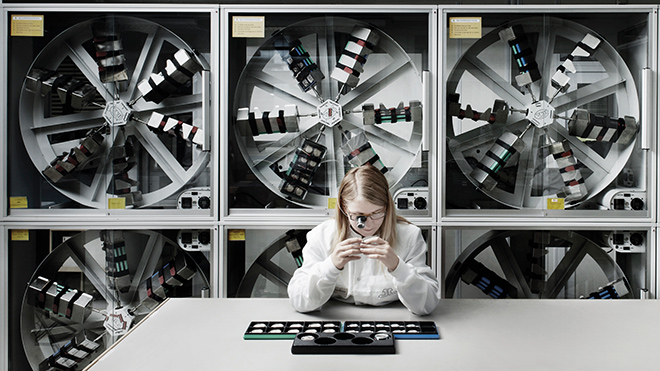
Cyclotest machine at the Jaeger-LeCoultre facility
Watch Quality Benchmark 4: JAEGER-LECOULTRE MASTER 1000 HOURS
Despite the respect earned from watch enthusiasts around the world, Jaeger-LeCoultre found it necessary to provide such customers with concrete assurances, resulting in the establishment of the Master 1000 Hours programme of rigorous testing. Assembled watches are put in a machine, which move and subject them to small shocks, not unlike when the watches are worn, to ensure that the watch components are firmly in place and to test the tension of the mainspring. The next tests concern balance spring adjustment, power reserve and reaction to Swiss room temperature (22°C), a lower temperature (4°C) and a higher temperature (40°C).
Test watches are then left on the cyclotest machine for three weeks to simulate wrist movements, both in motion and in repose. The entire test period of 1,000 hours is sufficient to serve as the run-in period. A technical glitch, if any, should manifest already and can be corrected while at the manufacture. And as a result, customer dissatisfaction is minimised.
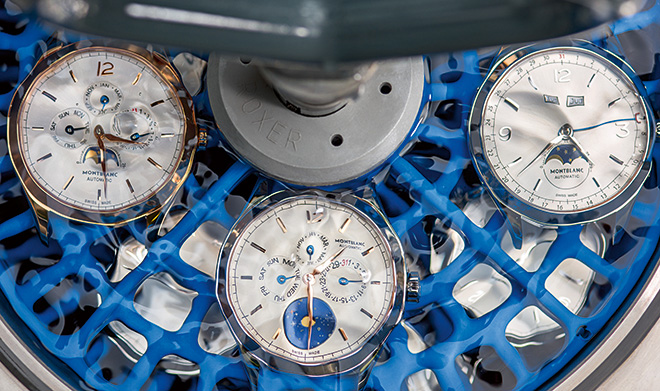
Montblanc Laboratory Test 500 – here, testing water resistance
Watch Quality Benchmark 5: MONTBLANC LABORATORY TEST 500
Having made a name with products other than watches, Montblanc had quite the task convincing traditional brand-conscious buyers of their watches’ technical virtues. One of the means used is the introduction of the Montblanc Laboratory Test 500. This comprehensive test program in a dedicated laboratory sees that each Montblanc watch to be released from the manufacture in Le Locle meets strict quality criteria, such that it can offer as long a service life as expected by the buyer.
Several procedures are carried out during the 500 hours of the test. For the first four hours, cased watches are tested for assembly quality and winding performance. This is followed by 80 hours of continuous accuracy control, 336 hours of functions control and 80 hours of general performance testing. In this process, daily wear and various environmental conditions are simulated by machines. The final test is two hours immersion in water to ensure perfect resistance.

At the METAS facility within Omega’s HQ, an automated system alters positions of the watches and move them from one temperature zone to another.
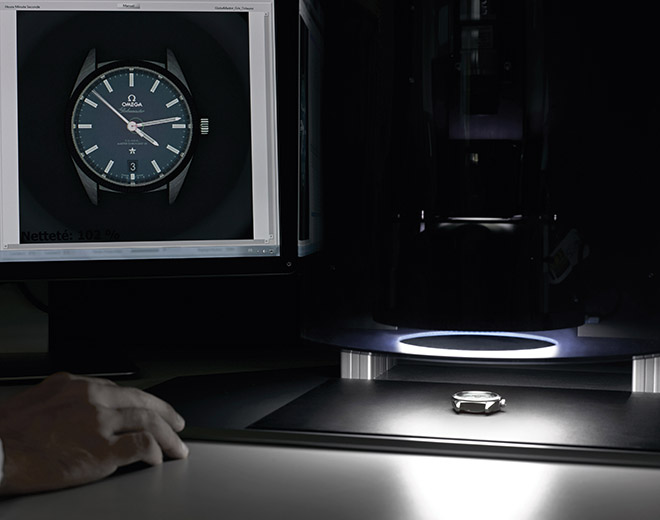
A photograph is taken for comparison with one from before the test process in order to determine the level of accuracy.
Watch Quality Benchmark 6: MASTER CHRONOMETER
This last example of in-house control comes with governmental oversight. Going beyond the regular chronometer certification, Omega has developed the Master Chronometer standard in collaboration with the Swiss Federal Institute of Metrology (METAS) as the next level of timekeeping performance.
First, COSC-certified movements are cased-up for a series of tests. Chronometric accuracy of the watches is monitored for a period of 24 hours after they have been exposed to a magnetic field of 15,000 gauss. Following demagnetisation, a machine the size of a (small) room arranges watches in six positions in two alternating temperature zones. Accuracy is rechecked at the end of the 4-day period to arrive at a daily average. Deviation in accuracy between when the watch has 100% and 33% power reserve is determined as well. A test watch must be accurate to +5/-0 seconds per day in order to be certified.

Everything is done under Omega’s roof at the firm’s facility in Biel but a room is allocated to METAS so their personnel can audit the watch company’s test results using their own equipment. This is why the certification is official and the red certificate card can bear the METAS emblem with Swiss national flag on it.
More brands are diligently working in the area of quality control. With competition being more intensive, everyone is fuelled by the need to offer added value, which is always beneficial to end users. At the close of the day, it is realistic to remember that mechanical watches do not stay accurate forever. Their performance theoretically can be affected by the knocks and bumps from everyday usage, as well as from their natural service life. This is why reasonable care should be used when wearing and handling your watches, and why you should have them serviced at the interval suggested by their respective manufacturers.

